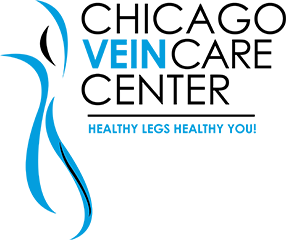For the Dubczyk’s varicose veins runs in the family.
61-year-old Wladyslawa had varicose vein surgery two years ago. Then two weeks ago, it was her daughter Agnieszkay’s turn.
“Ever since I was a child, my mom told me I’d get varicose veins and she was right. The leg cramps got worse, the bulging veins got worse, and I also needed surgery.”
While varicose veins often run in families, studies show Polish families have far and away the highest rate in Europe.[1] A full one-in-five Poles have serious varicose veins or more advanced disease such as a venous ulcer.[2][3] That’s eight times the overall incidence in America.[4] Polish researchers, however, have also found a “significant amount of patients don’t start any treatment at all.”
All of which helps explain why Poles also have especially high rates of advanced vein disease as well. Polish researchers found among 40,000 adults, two percent had had a serious venous ulcer. That condition causes pain and weakness and often confines patients to wheelchairs. Untreated, the ulcer can become infected, leading to amputation, blood poisoning, and even death.
Chicago vein experts say they often see such progressive disease when Poles reach this country. “Unfortunately, the Polish patients I see have far more advanced disease,” says Ramon Castro M.D. The vein specialist sees many Polish patients in his West Chicago practice.
Varicose veins occur when the “one way” valves that return blood to your heart become weak because of genetics, weight gain, pregnancy, age or other factors. The returning blood now flows backyard with gravity and pools in your legs. The earliest symptom is varicose veins; the danger is left untreated patients can develop severe swelling, painful ulcers, or blood clots that can spread to the lungs.
For that reason, the price for delaying treatment is heavy. Dr. Castro says, “Many Polish patients suffer enormous swelling and pain, they’re jobs are threatened, and their daily activities are extremely limited. And add to that the needless medical expense.” Dr. Castro, a Diplomate of the American Board of Venous and Lymphatic Medicine, is Medical Director of the Chicago Vein Care Center.
Genetics isn’t the only reason varicose veins are so universal among the Polish population.. In their home countries Poles often work in the fields or one their feet. In addition their national health care system pays for arterial problems but not vein problems. Patients don’t get treated and by the time they seek treatment in this country, their vein disease is very advanced.
Besides cost, many Poles also avoid treatment because they think “vein stripping,” a major operation, is their only option. In fact, that surgery has been largely replaced by a 20 minute laser procedure. Patients leave the office minutes after their treatment and go right back to work and their normal lives the next day.
Agnieszkay says “I couldn’t believe it. Almost no pain at all. I was very happy.”
Dr. Castro says, “What’s needed for these populations is education. We have to teach them the symptoms of varicose veins, why it’s dangerous to ignore it, and the new nearly painless ways to treat the problem.”
Indeed, studies from the Mayo Clinic and elsewhere show that same day laser therapy prevents the terrible ulcers, pain, swelling, and even possible amputations and life-threatening blood clots down the road.”
Studies, in fact, show that almost every European country has had a marked decrease in serious vein complications like eczema, pigmentation, and venous ulcers over the last two decades. Researchers believe this is because most European countries now treat the problem (often with a same day office procedure) before it advances. Poland appears to be the one country that still delays treatment.
Dr .Castro says treating the severe long-neglected varicose veins among his Polish patients can be more challenging…but it’s also more rewarding. “It can be a more difficult procedure,” he says, “but we’re making a real difference in someone’s life.”
“The problem will still exist for my children,” says Agnieszkay. “Their risk won’t go away. But I had to suffer far less than my mother. Maybe they can suffer even less than me.”
[1] Presentation of the Polish Phlebology Society
UIP World Congress, Boston 2013
[2] Effectiveness of varicose vein treatment assessed by epidemological comparative studies
Gorski et al, Pol Merrkur Lekarski 2004 Jul;17(97):21-4.
[3] Prevalence of chronic venous insufficiency in men and women in Poland
Jawain et al, Phlebology. 2003;18:110-121.
[4] Varicose vein epidemiology: the Framingham study
Brand et al Amer Journal of Prev Medicine1988 Mar-Apr;4(2):96-101.

